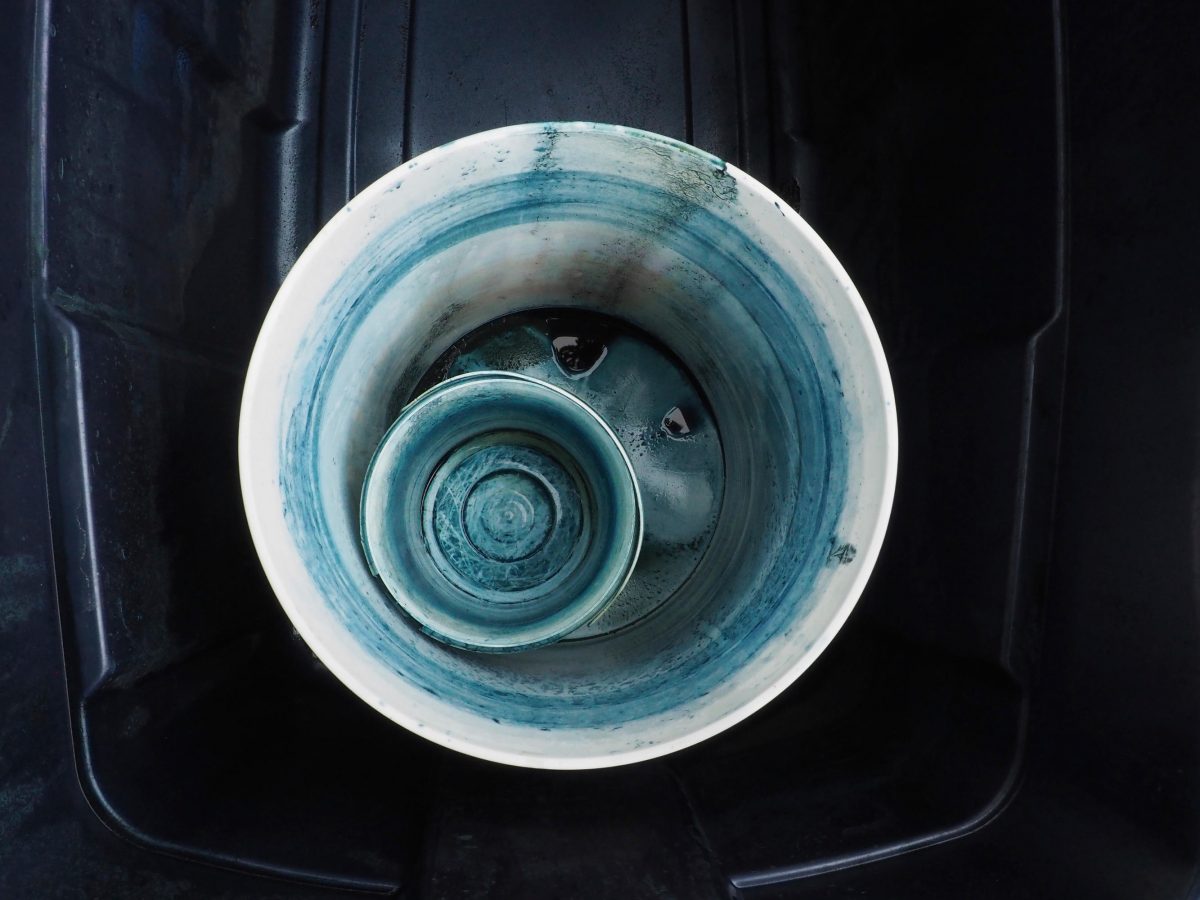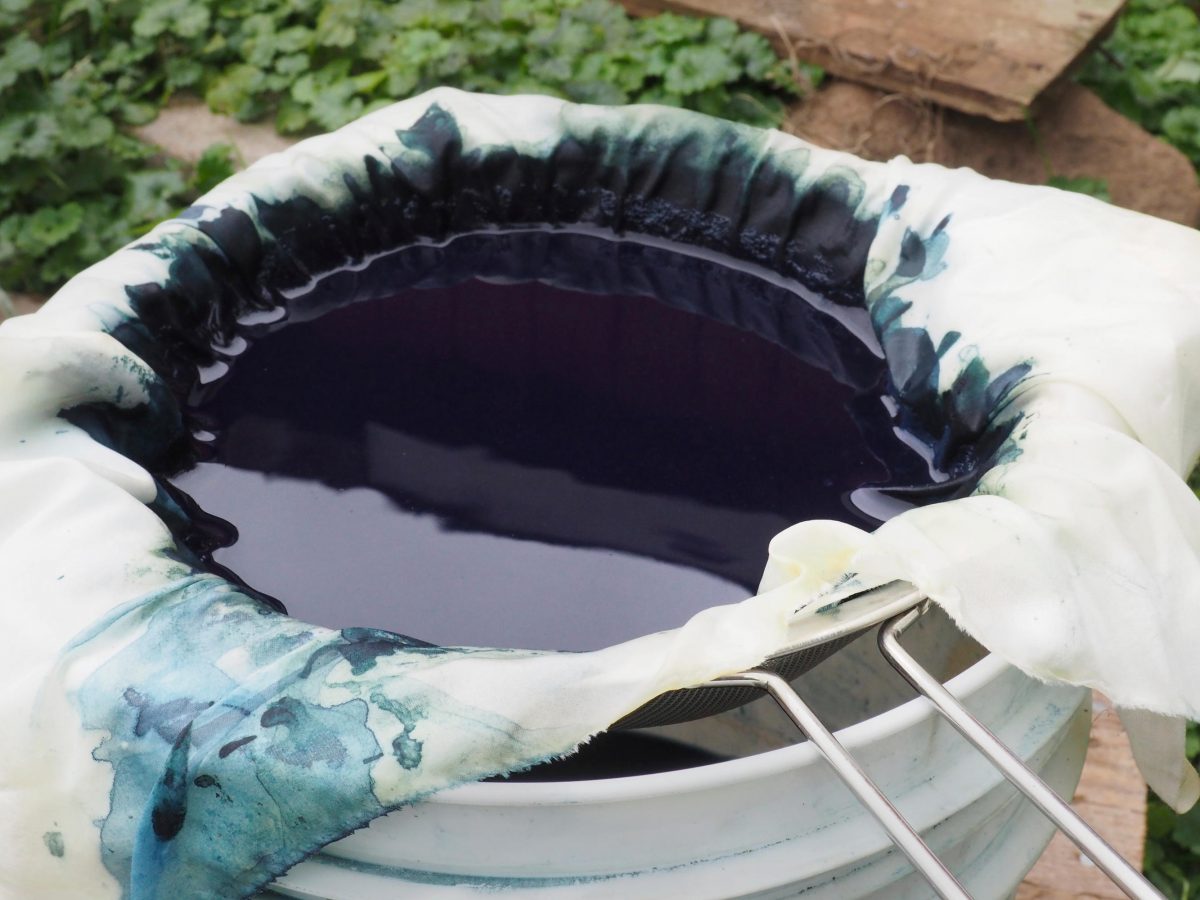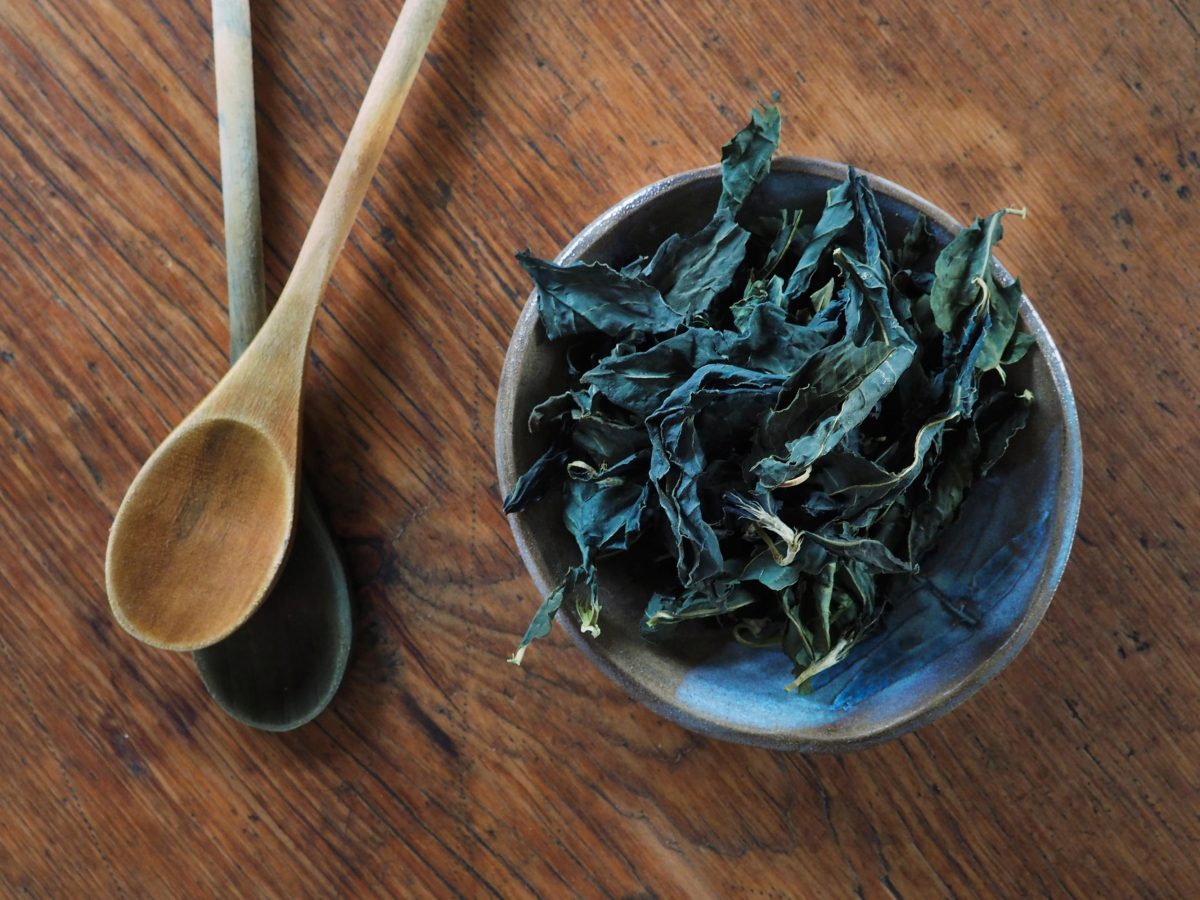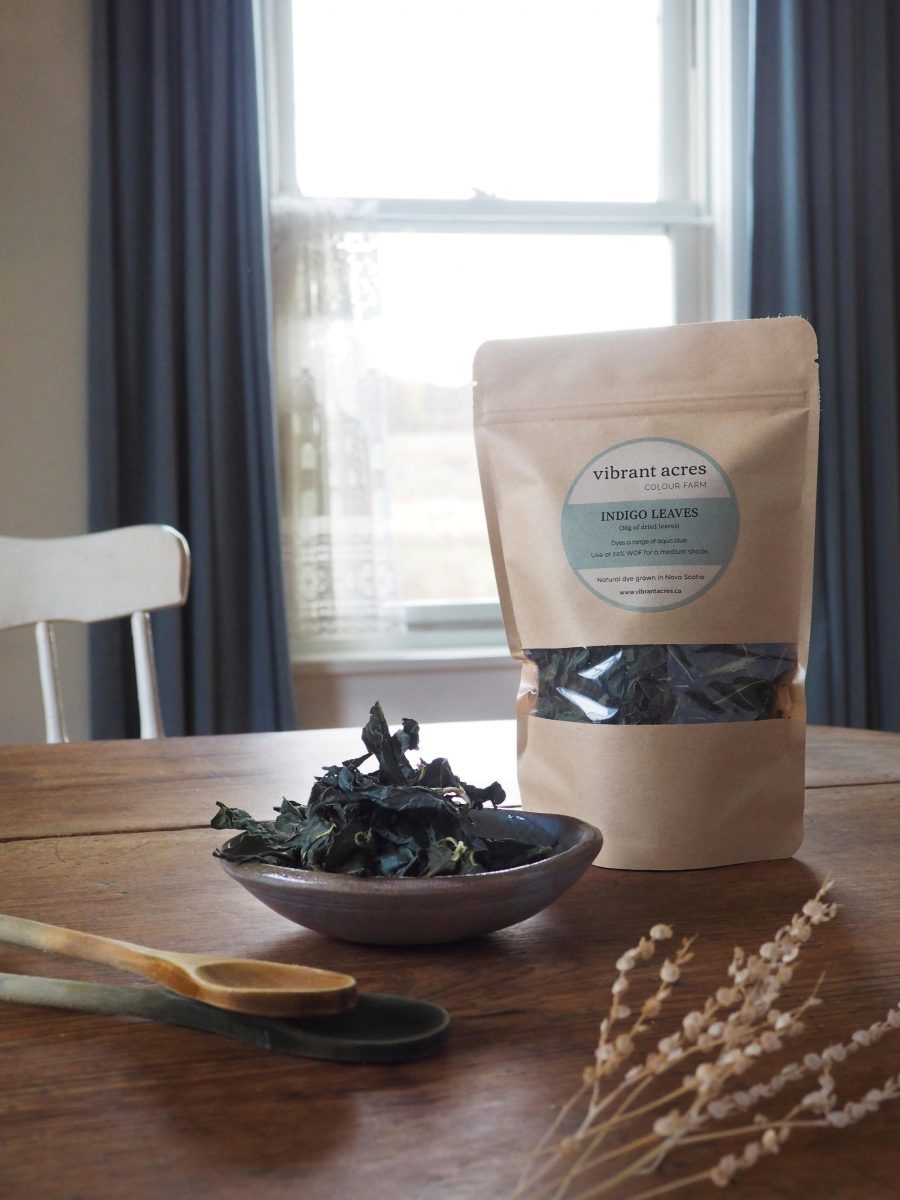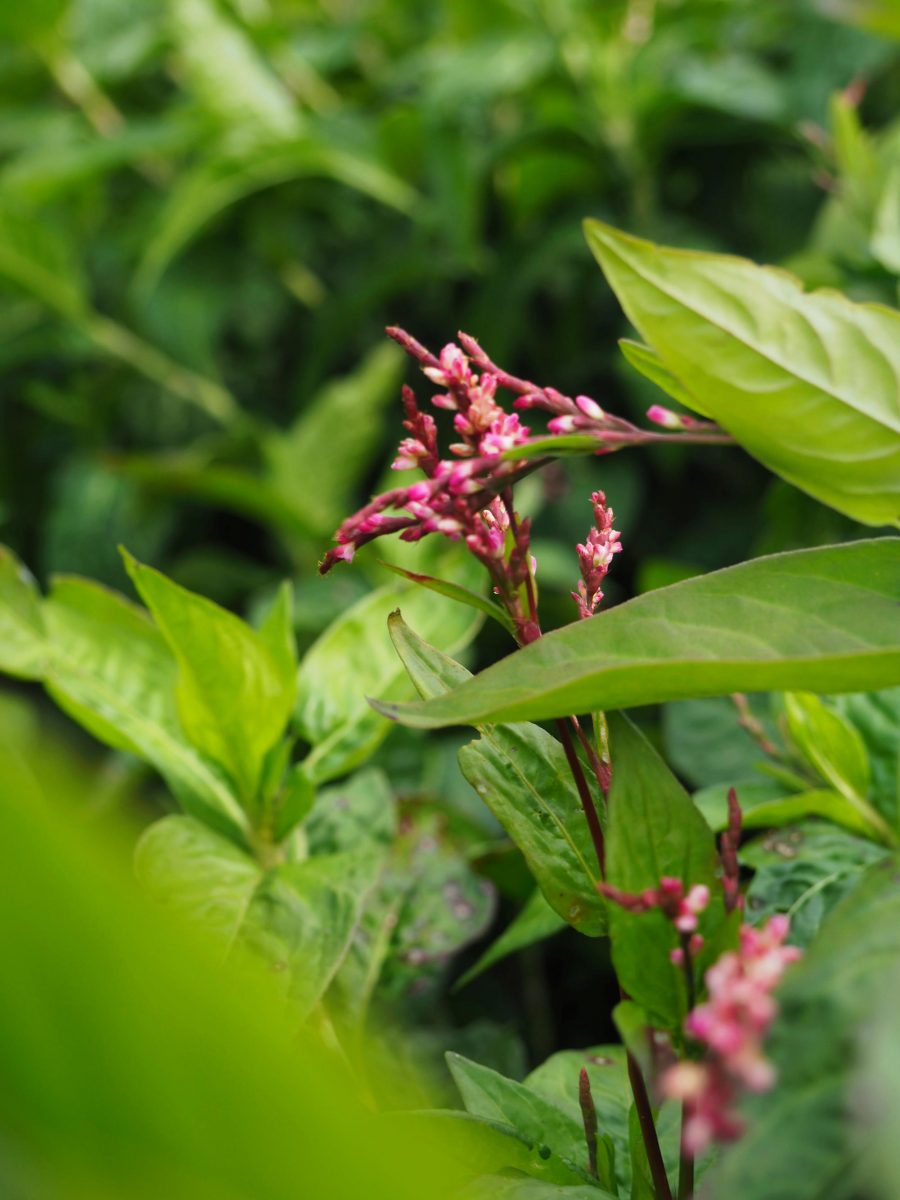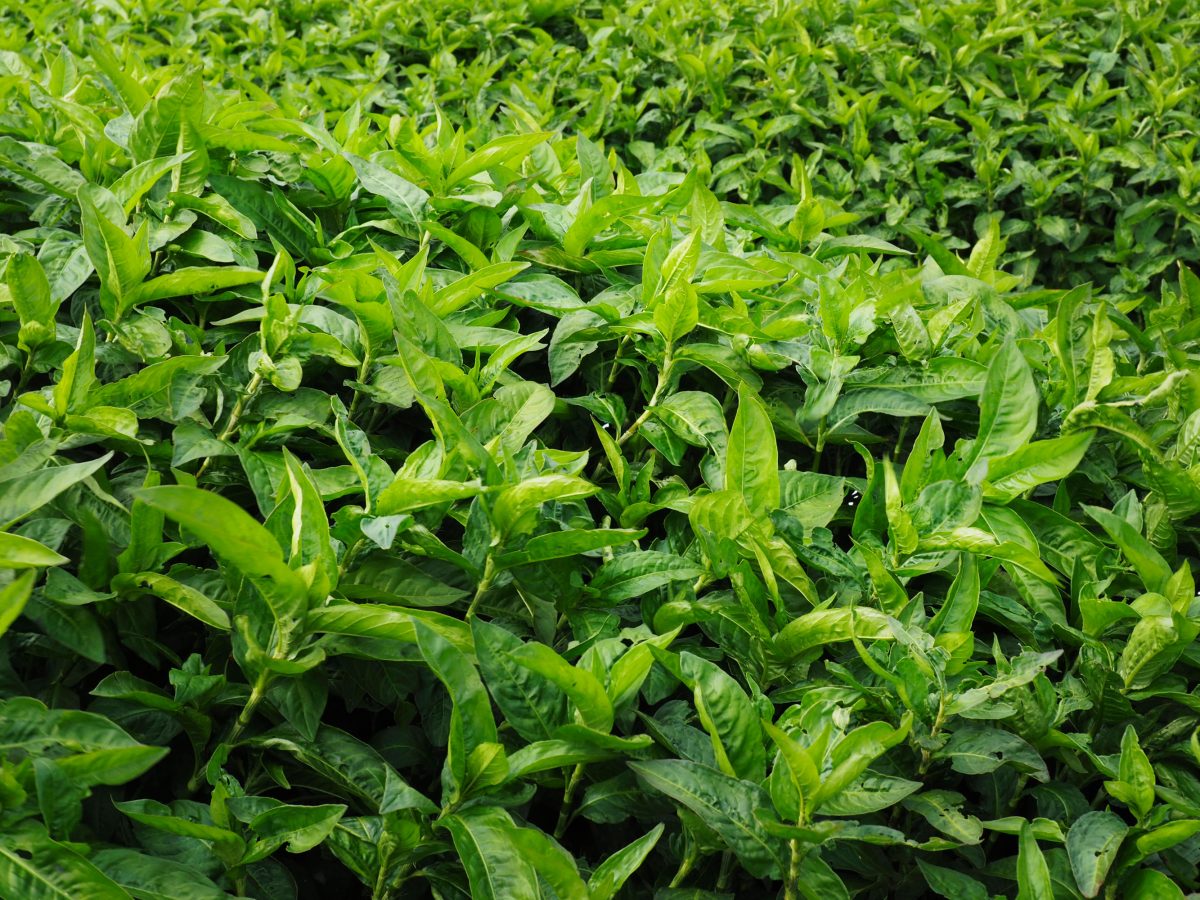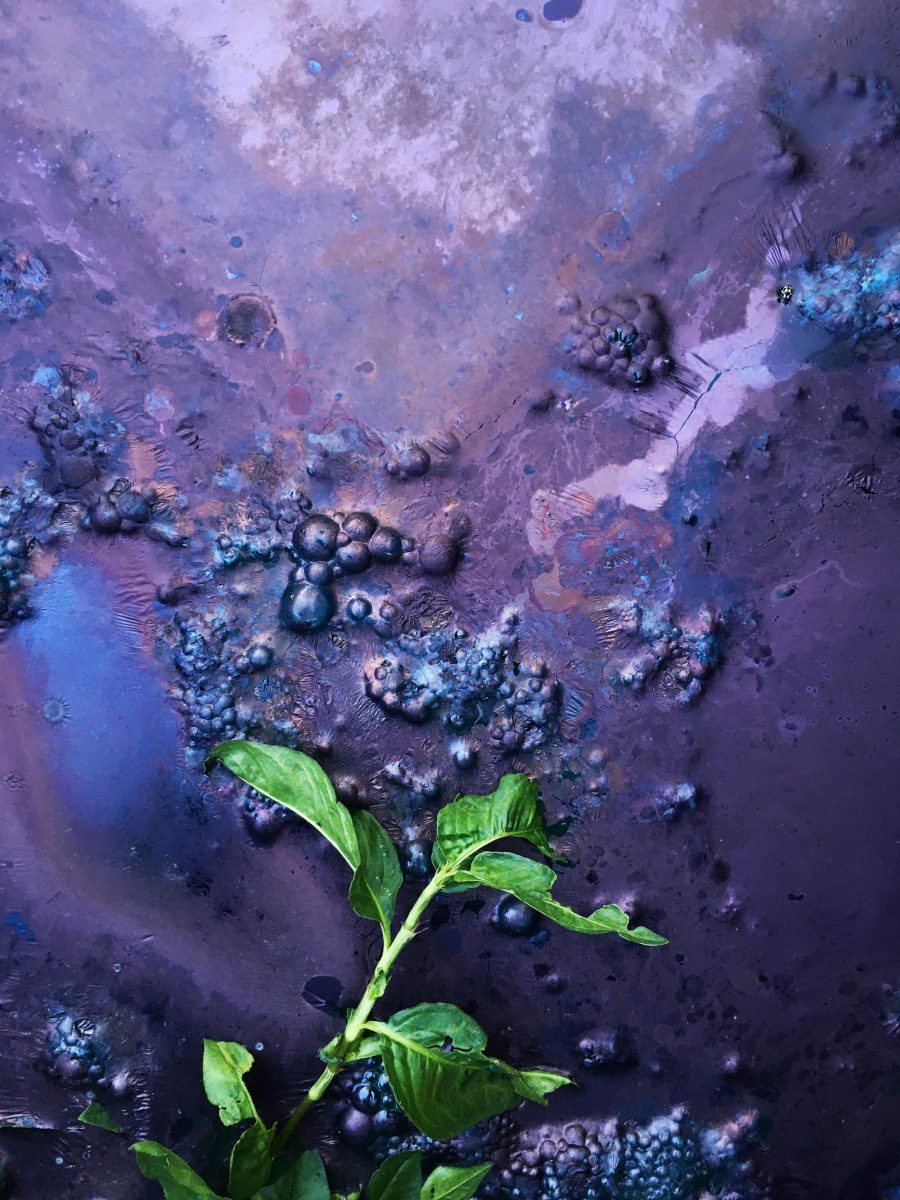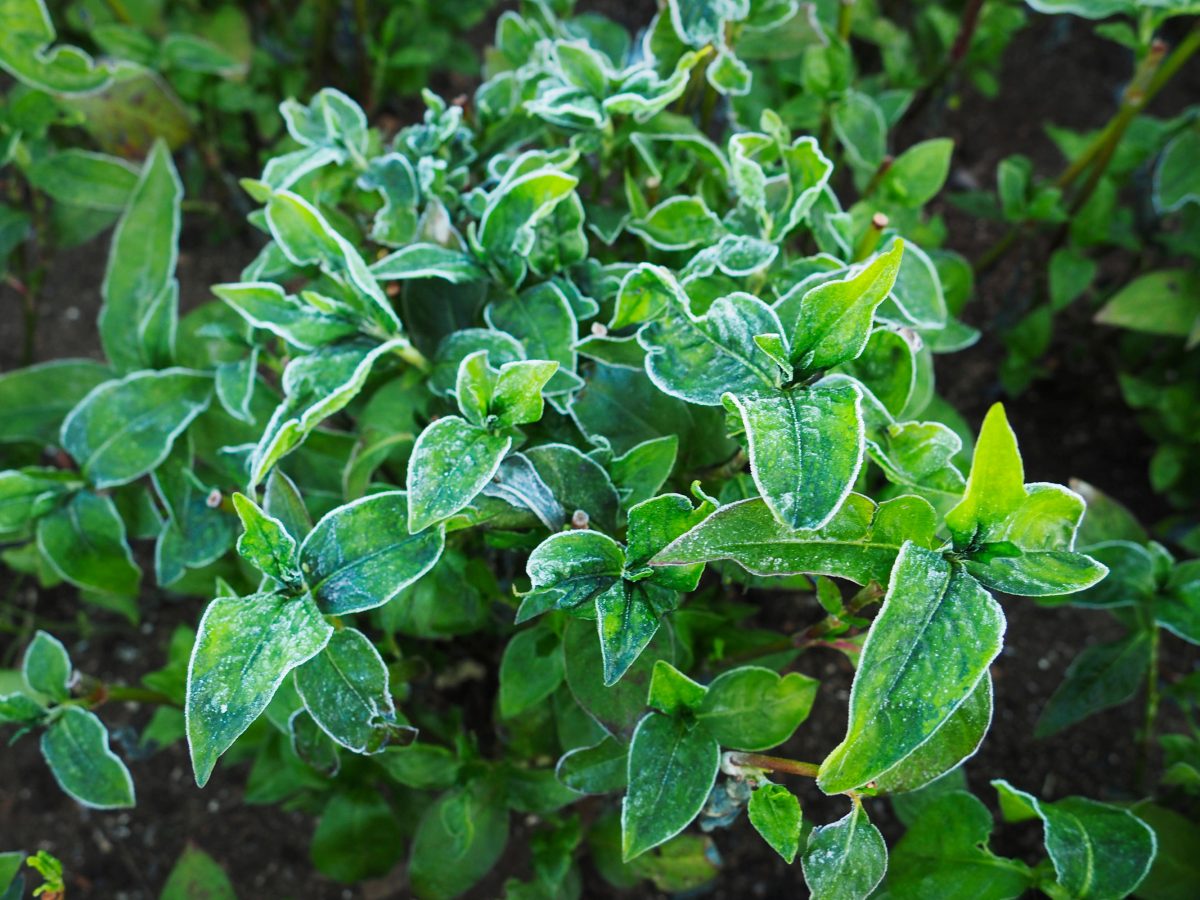Japanese Indigo, Persicaria tinctoria
It seems utterly magical that a fairly unassuming green leafy plant can create such a vibrant blue from its leaves! The only hint at what’s to come is when the leaves show distress and turn blue – like they do after an early frost. Japanese indigo just loves our clay soil and maritime climate and we find that it grows very well on our farm. We harvest the fresh leaves at their peak, remove them from their stems by hand, and dry them immediately to preserve maximum colour and freshness. Dried indigo leaves will dye a range of light aqua blue to a rich medium blue depending on the process you follow and quantity of leaves you use.
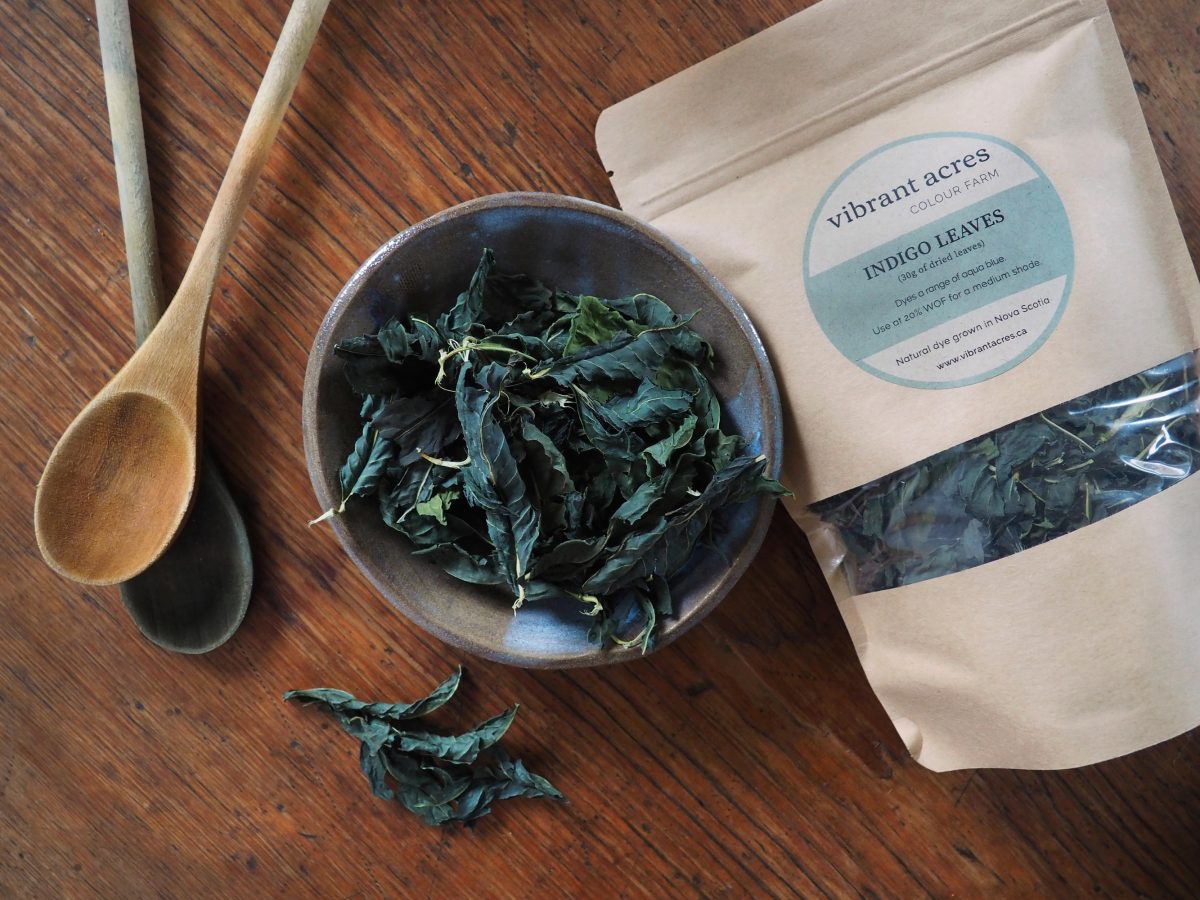
Key Dye Colours: Aqua, teal, blue.
Dye Process: The indigo dyeing process is unlike other dyes and requires a vat. Each indigo dyer tends to develop their own approach based on past experience and preferences. These are the basic parts of the process: simmer the leaves; discard the water, which turns a yellow brown (if you keep it, you will end up with more of a teal blue); add fresh water, along with a reducing agent, such as thiourea dioxide, and an alkaline agent, such as lime or washing soda; return the pot to a simmer; strain out the leaves; dip your fibre and then remove it so that it oxidizes (repeat this step to get a dark colour); keep the vat warm as you go. A quick internet search can give you detailed recipes to use as a starting point.
Quantities: A small bag will dye ~150g of fibre a medium shade and a large bag will dye ~500g of fibre a medium shade. A typical wool skein is 100g.
Key Modifiers: Indigo can be used to overdye other colours, such as yellows, to produce greens. Choosing to not discard the first batch of water, above, will keep the yellow dye elements and allow you to achieve more teal blues.
Washfastness: Excellent.
Lightfastness: Excellent.
Overall Colourfastness: Excellent.
For the classic deep indigo colour, you will want to use indigo powder. Indigo powder is fairly complex and time consuming for us to extract and process. If you’re looking for an affordable way to explore indigo in small quantities, dried indigo leaves can’t be beat as a local source of blue dye.
Natural colour grown with care
This natural plant dye was grown with care on our small farm in Nova Scotia’s Annapolis Valley. All of our dye plant material is dried on site immediately after harvest to preserve quality and maximum vibrancy of colour.
Natural dyes can only be used on natural fibres (cotton, linen, wool, bamboo, hemp, silk). For best results, natural fibres should be pre-prepared using a mordant or tannin before dyeing. Natural dyes and mordants are available in our online store.
Natural dyes create unique living colours that will evolve and wear over time as they are washed, worn, and loved creating colours and garments that are alive, telling the story of their use. While they are not as consistently repeatable or as durable as many synthetic dyes, they are far more environmentally friendly and, in our opinion, absolutely unmatched in magic and beauty. If you are new to natural dyes, we have a free guide to getting started with natural dyes.
